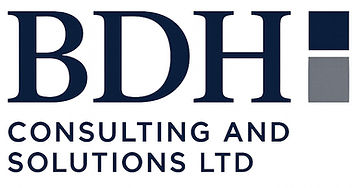Strengthen Compliance in Your Organization Today
- Ben Hueso
- Aug 23
- 3 min read
In today's fast-paced business world, compliance is more important than ever. Organizations face numerous regulations and standards that they must adhere to. Failing to comply can lead to severe consequences, including hefty fines, legal issues, and damage to reputation. So, how can you strengthen compliance in your organization? This post will guide you through practical steps to enhance your compliance efforts.
Understanding Compliance
Compliance refers to the process of ensuring that an organization follows laws, regulations, and internal policies. It is not just about avoiding penalties; it is about building trust with customers, employees, and stakeholders.
When compliance is prioritized, it creates a culture of integrity. Employees feel secure knowing they are part of an organization that values ethical behavior.
The Importance of a Compliance Program
A robust compliance program is essential for any organization. Here are some key benefits:
Risk Mitigation: A strong compliance program helps identify and mitigate risks before they escalate.
Enhanced Reputation: Organizations known for their compliance are often viewed more favorably by customers and partners.
Operational Efficiency: Compliance programs streamline processes, making operations more efficient.
Employee Morale: A culture of compliance fosters a positive work environment, boosting employee morale.
Steps to Strengthen Compliance
1. Assess Current Compliance Status
Before making changes, assess your current compliance status. Identify areas where your organization excels and where it falls short.
Conduct a thorough audit of your policies and procedures. This will help you understand the gaps that need to be addressed.
2. Develop Clear Policies and Procedures
Once you have assessed your compliance status, develop clear policies and procedures. These should be easy to understand and accessible to all employees.
Consider the following when creating your policies:
Clarity: Use simple language and avoid jargon.
Relevance: Ensure policies are relevant to your industry and specific to your organization.
Accessibility: Make policies easily accessible, whether through an intranet or printed materials.
3. Provide Training and Resources
Training is crucial for ensuring that employees understand compliance requirements. Regular training sessions can help reinforce the importance of compliance.
Consider the following training methods:
Workshops: Host interactive workshops to engage employees.
Online Courses: Provide online training modules for flexibility.
Regular Updates: Keep employees informed about changes in regulations and policies.
4. Foster a Culture of Compliance
Creating a culture of compliance starts at the top. Leadership should model ethical behavior and emphasize the importance of compliance.
Encourage open communication where employees feel comfortable reporting concerns.
5. Monitor and Evaluate Compliance Efforts
Regularly monitor and evaluate your compliance efforts. This can be done through audits, surveys, and feedback from employees.
Use this information to make necessary adjustments to your compliance program.
6. Leverage Technology
Technology can play a significant role in enhancing compliance. Consider using compliance management software to streamline processes.
These tools can help with:
Document Management: Keep track of policies and procedures.
Training Tracking: Monitor employee training progress.
Reporting: Generate reports to assess compliance status.
Real-World Examples
Example 1: Financial Services
A financial services company implemented a comprehensive compliance program after facing regulatory scrutiny. They conducted a thorough audit, developed clear policies, and provided extensive training. As a result, they improved their compliance status and regained trust from clients.
Example 2: Healthcare
A healthcare organization faced challenges with patient data privacy. They established a compliance team, developed new policies, and trained staff on data protection. This proactive approach not only ensured compliance but also enhanced patient trust.
The Role of Leadership in Compliance
Leadership plays a crucial role in fostering a culture of compliance. When leaders prioritize compliance, it sets the tone for the entire organization.
Leaders should:
Communicate the Importance: Regularly discuss compliance in meetings and communications.
Lead by Example: Model ethical behavior and adherence to policies.
Support Employees: Provide resources and support for employees to comply with regulations.
Engaging Employees in Compliance
Engaging employees in compliance efforts is essential. Here are some strategies to involve them:
Feedback Mechanisms: Create channels for employees to provide feedback on compliance policies.
Recognition Programs: Recognize and reward employees who demonstrate a commitment to compliance.
Involvement in Policy Development: Involve employees in the development of compliance policies to ensure they are practical and relevant.
Conclusion: A Commitment to Compliance
Strengthening compliance in your organization is not a one-time effort; it requires ongoing commitment and dedication. By assessing your current status, developing clear policies, providing training, and fostering a culture of compliance, you can create a more secure and trustworthy organization.
Remember, compliance is not just about avoiding penalties; it is about building a strong foundation for your organization’s future.




Comments